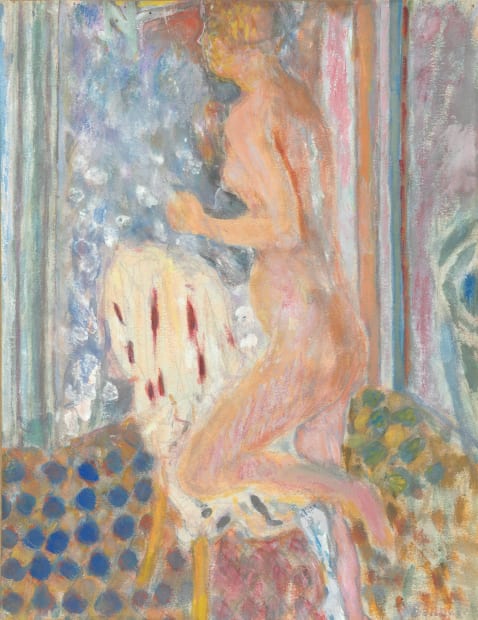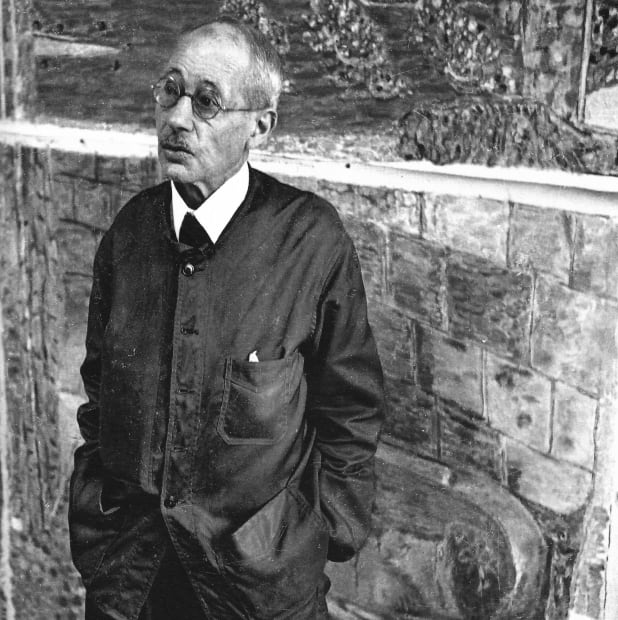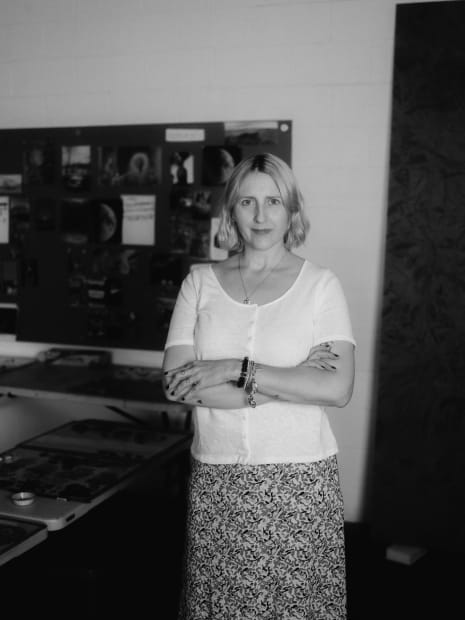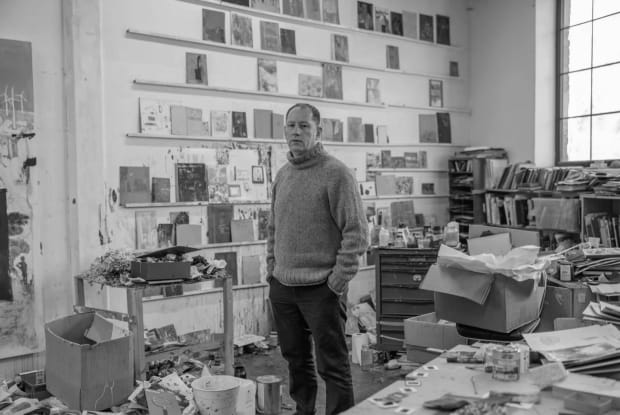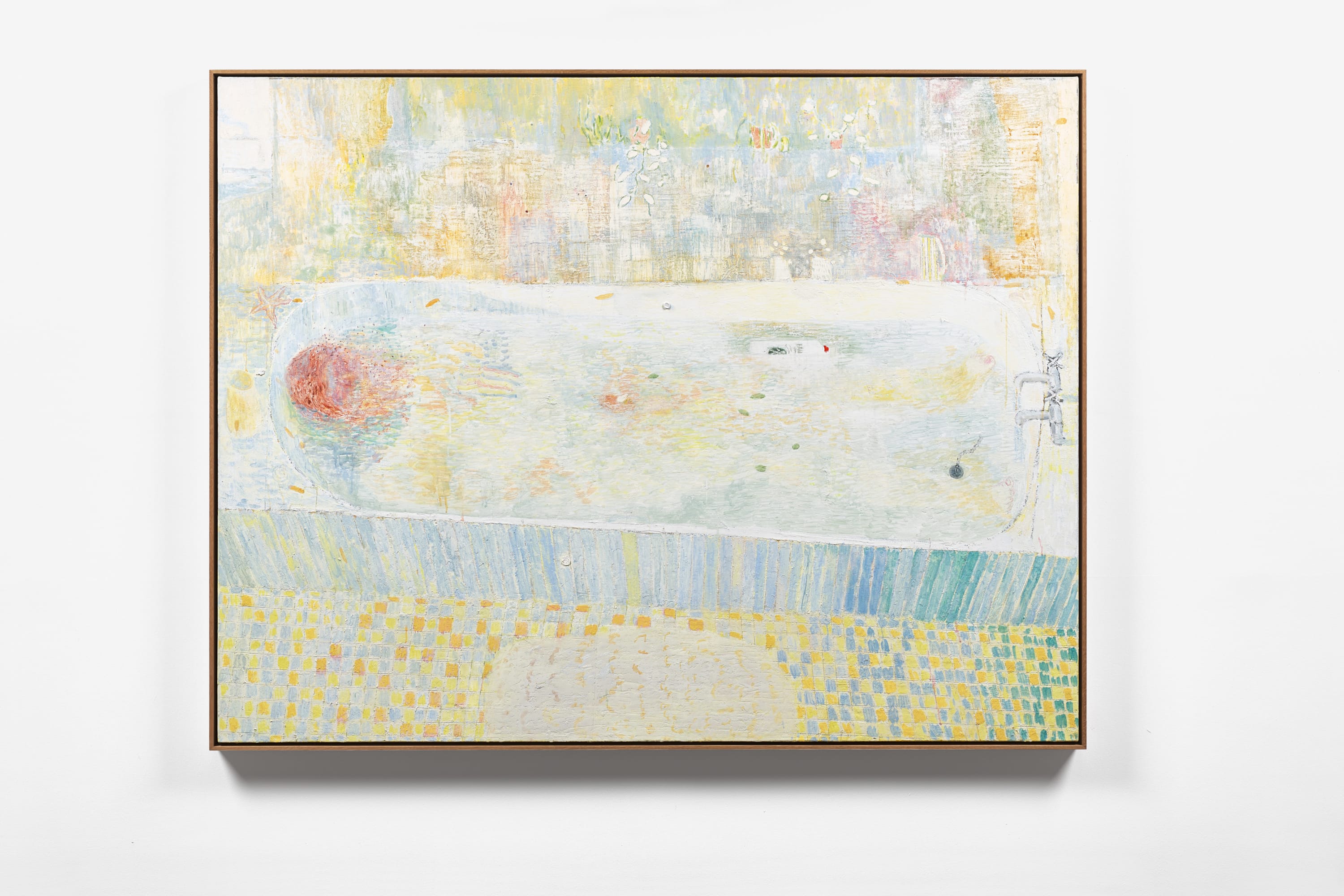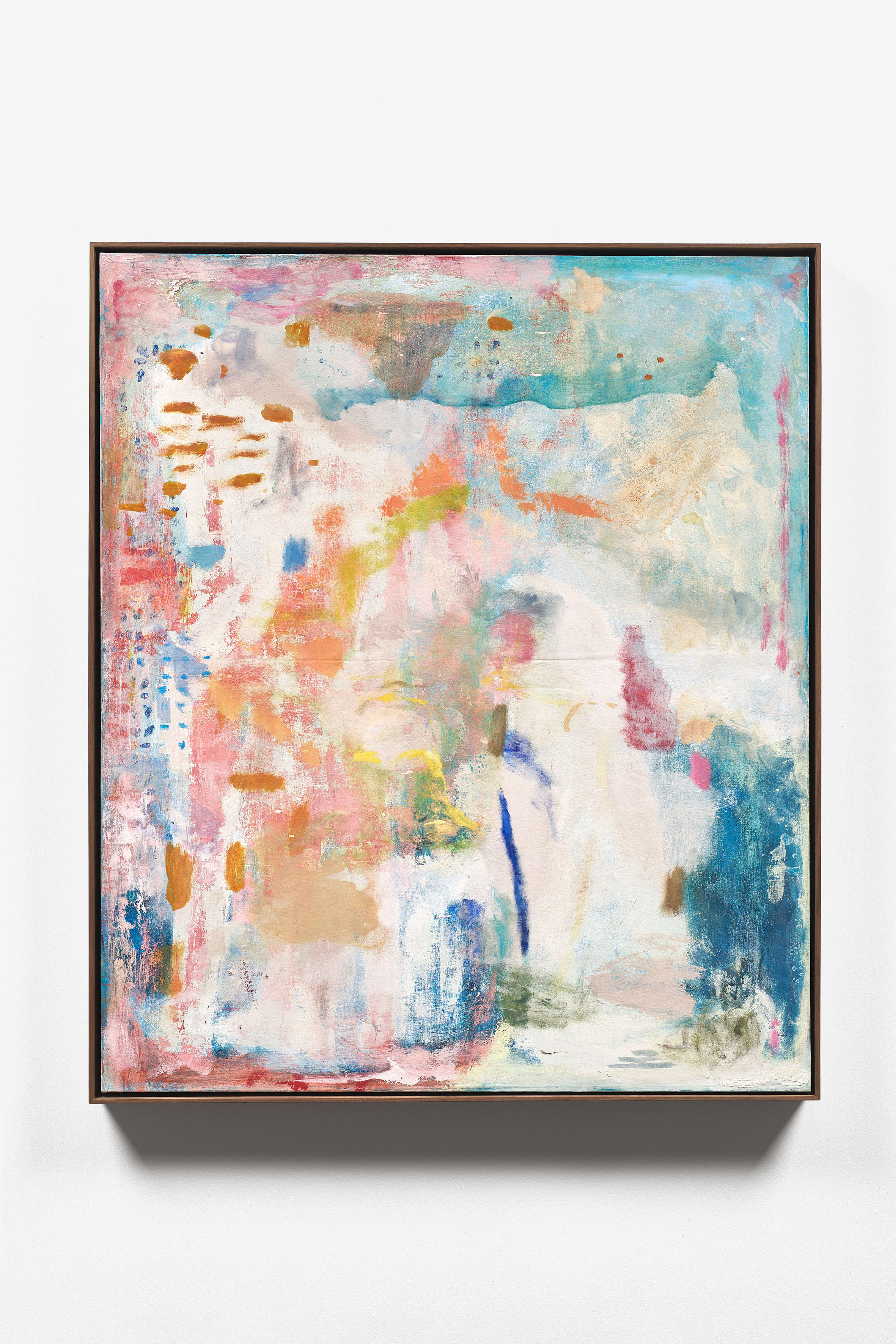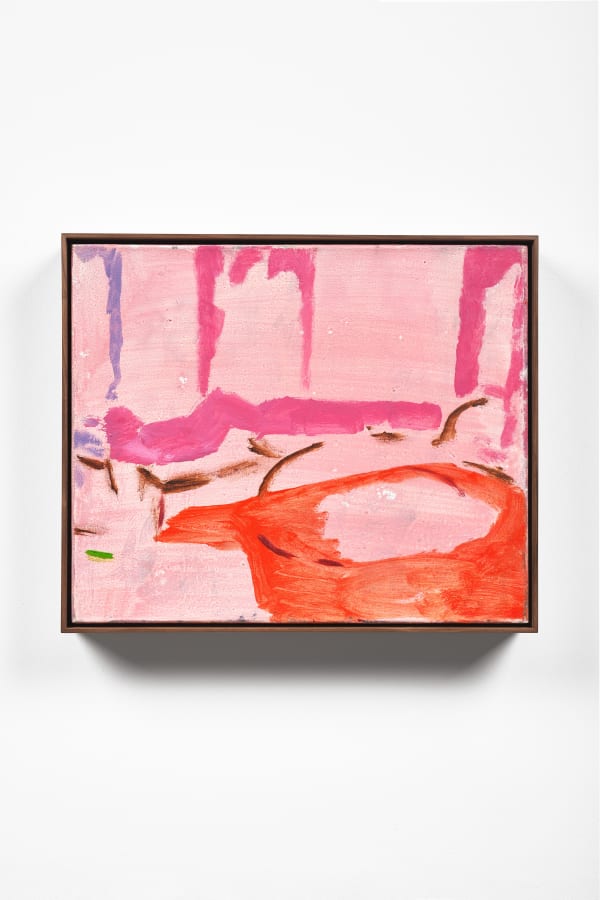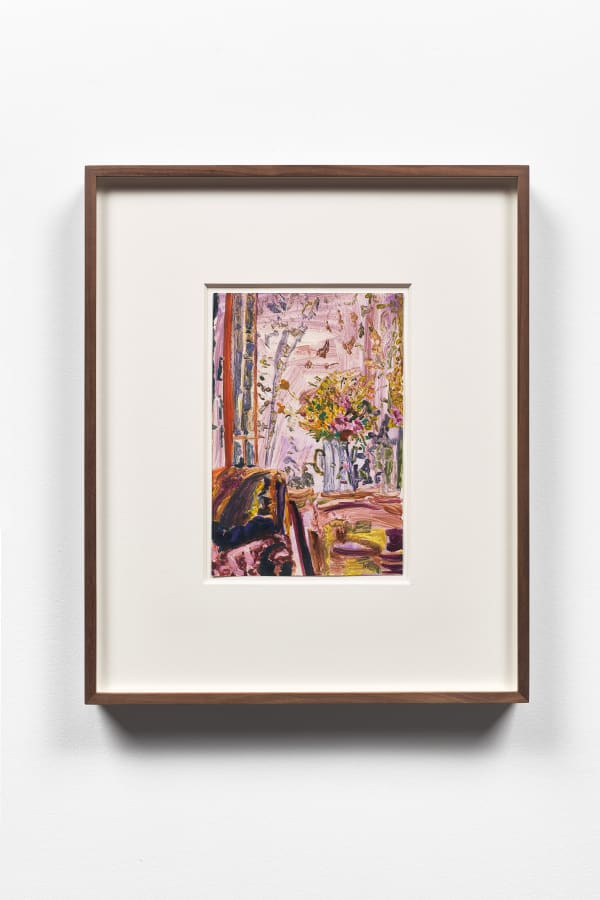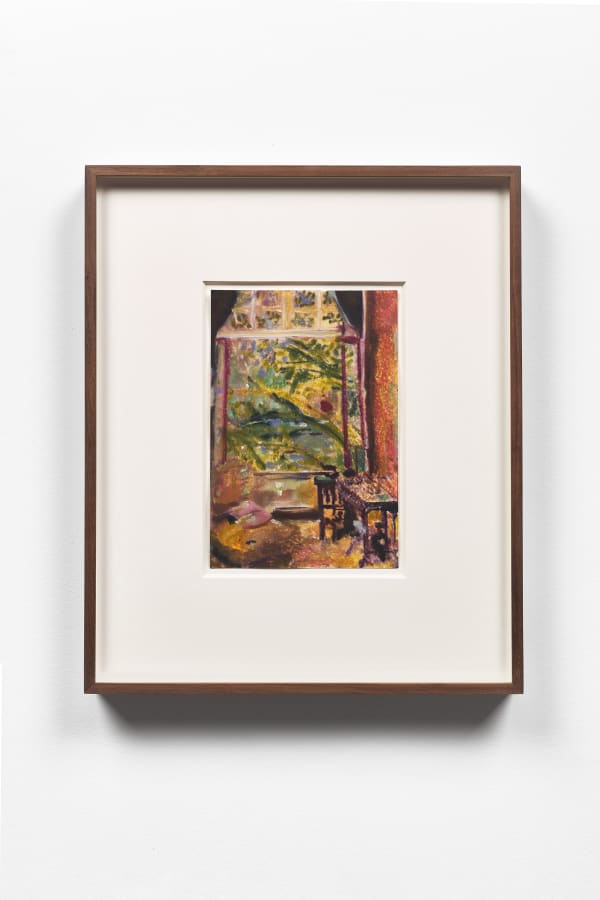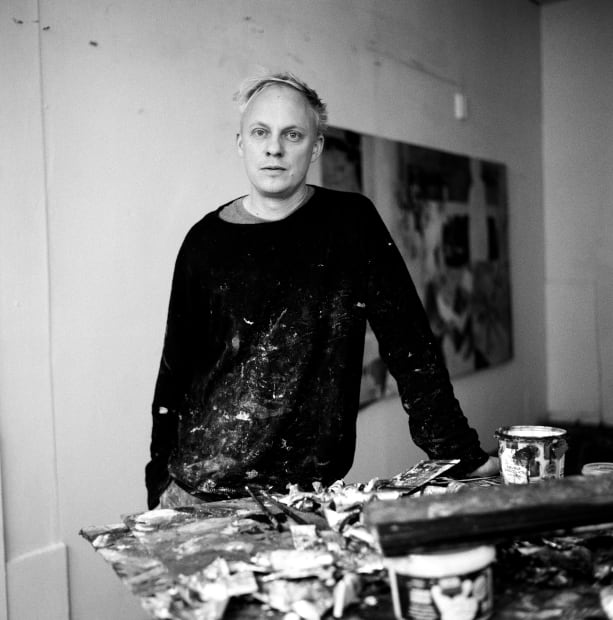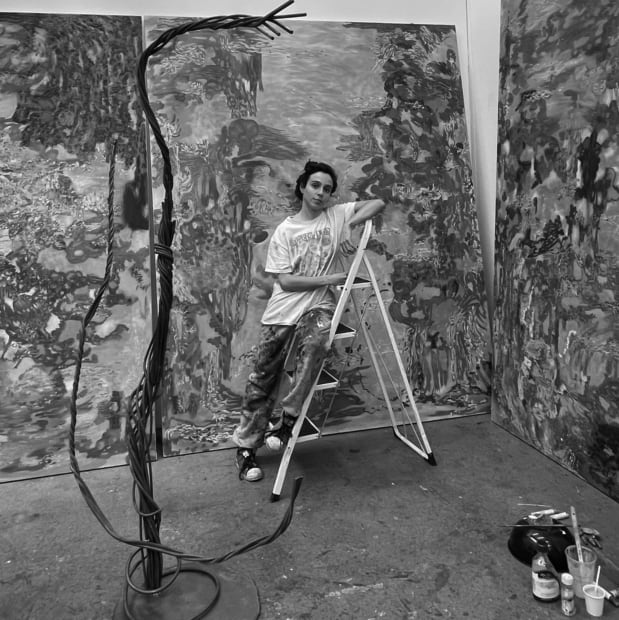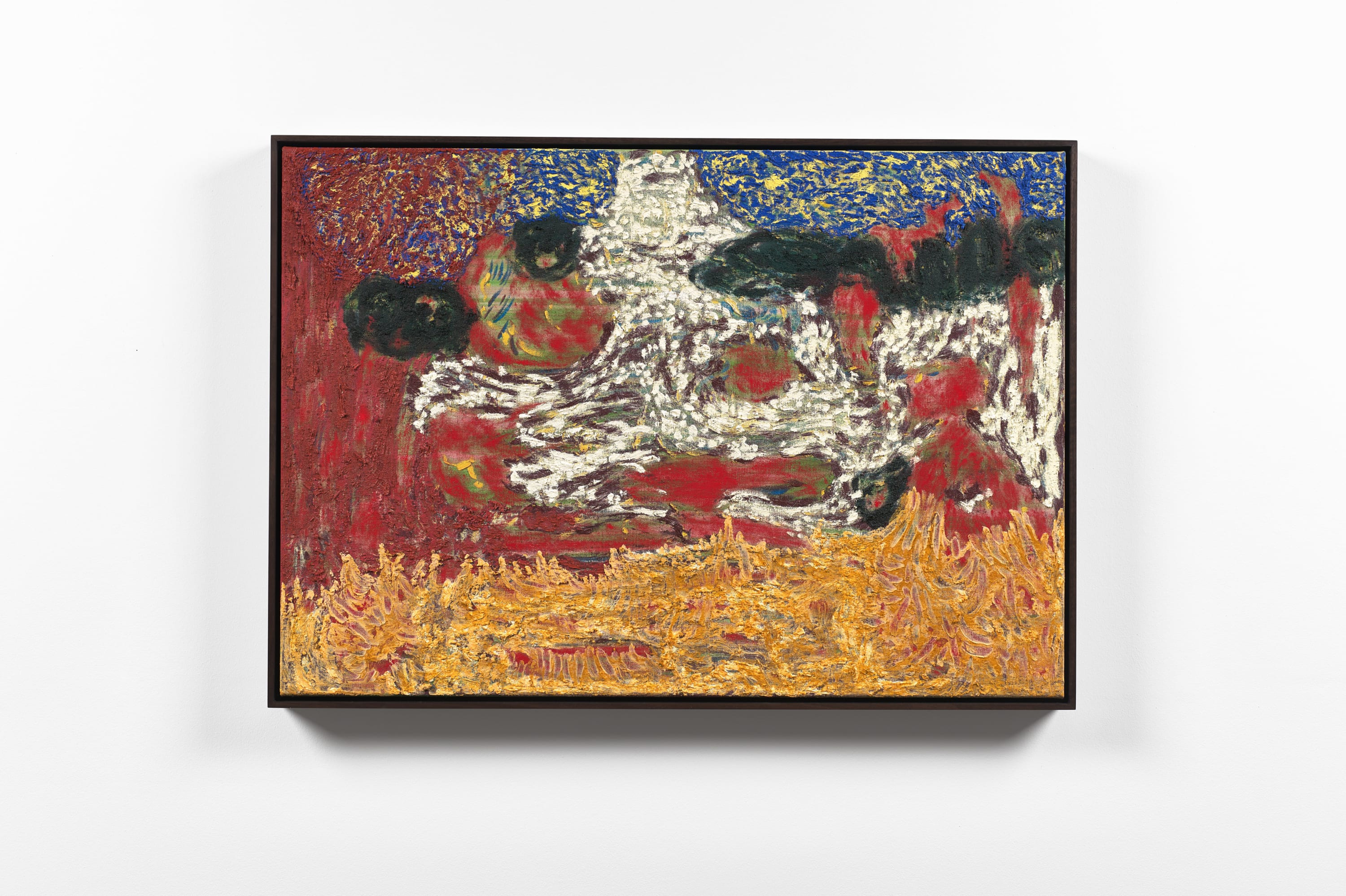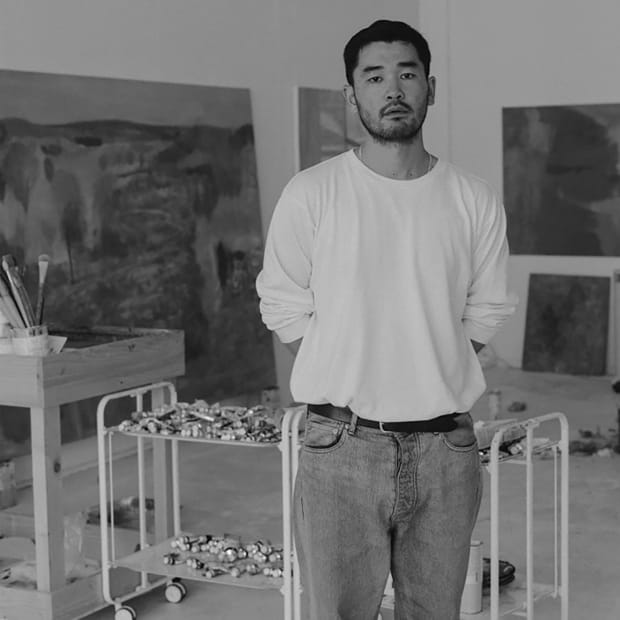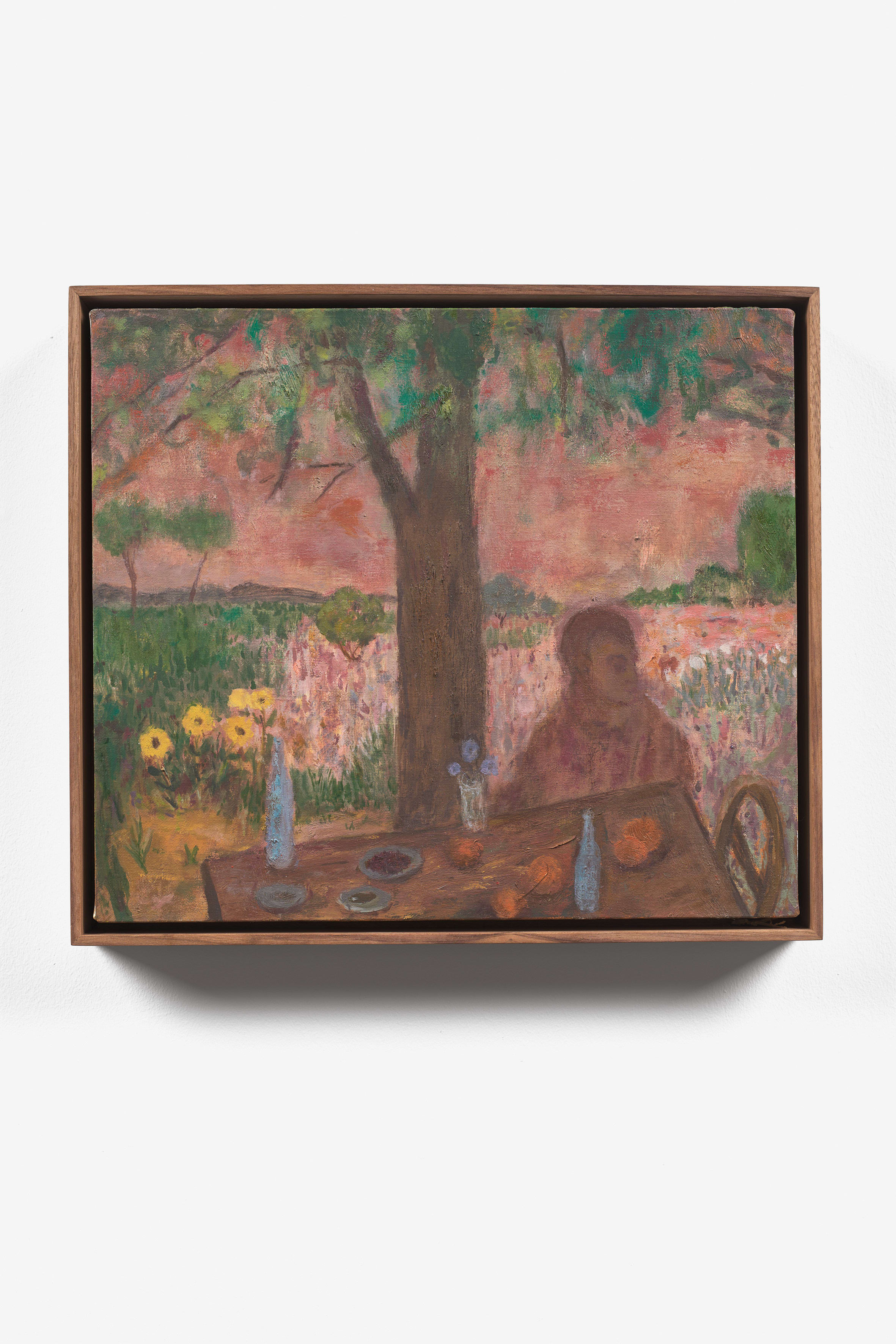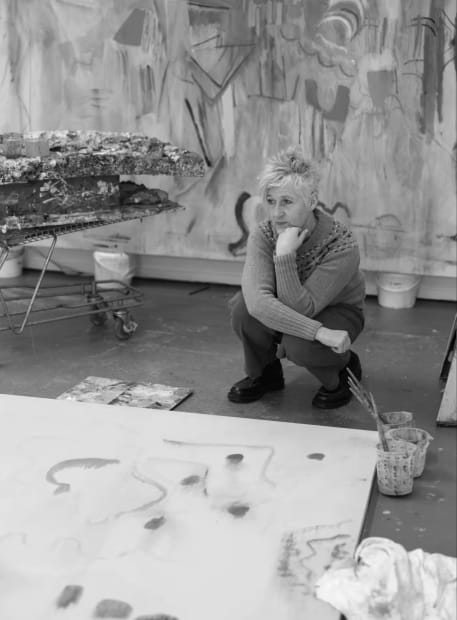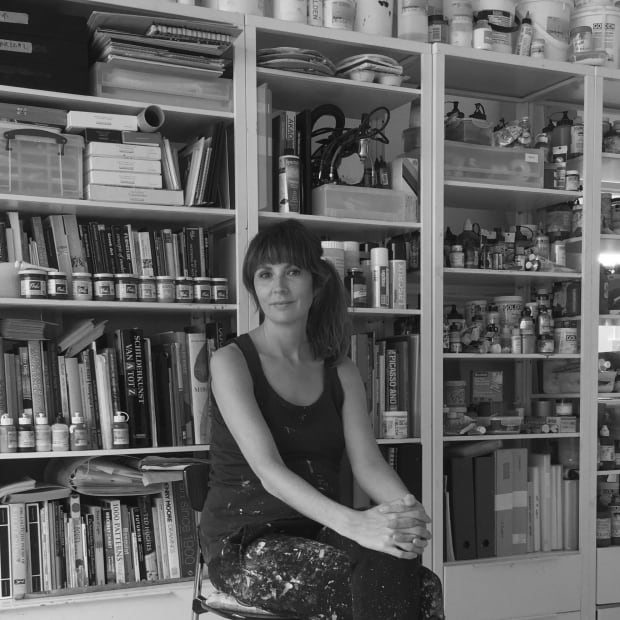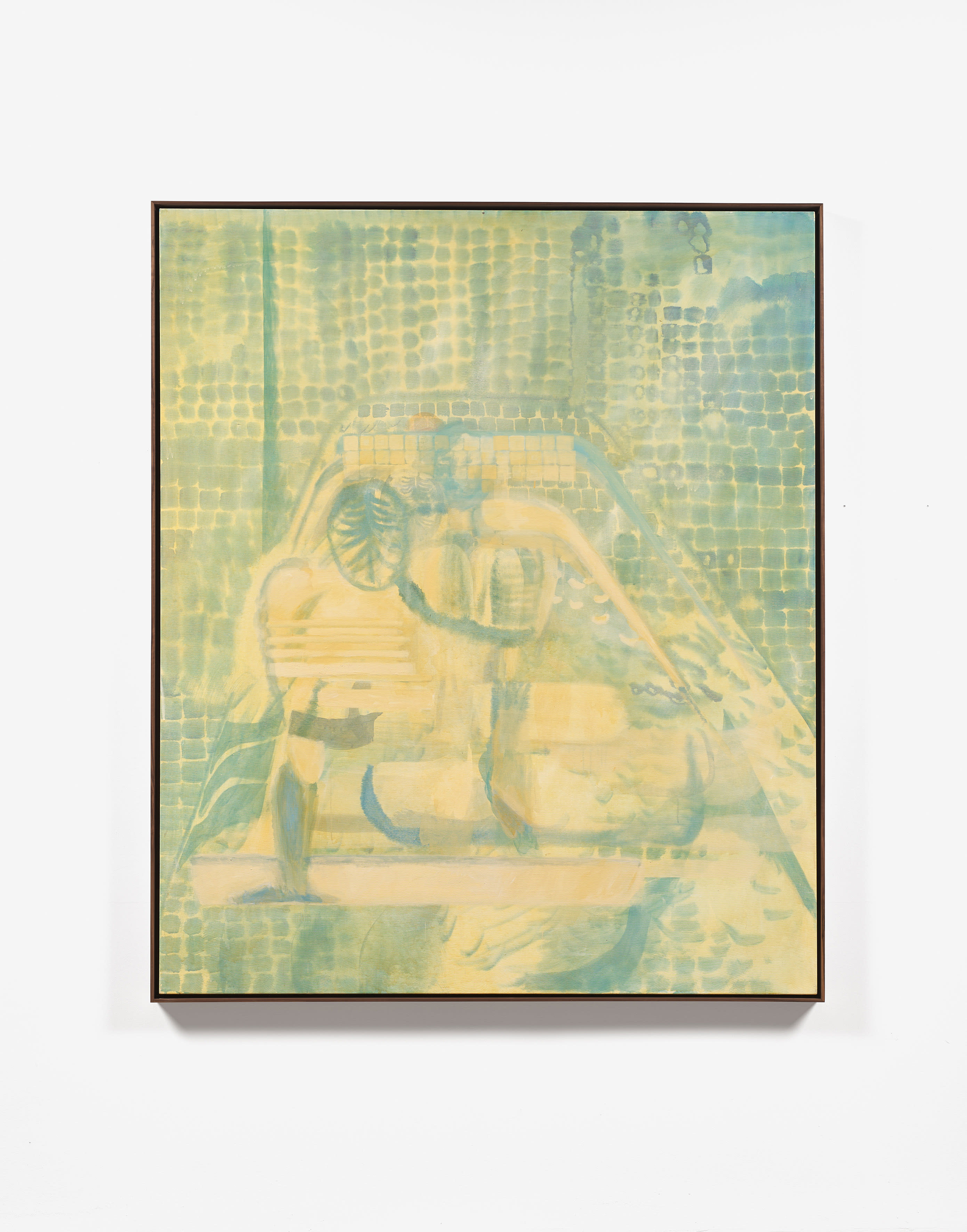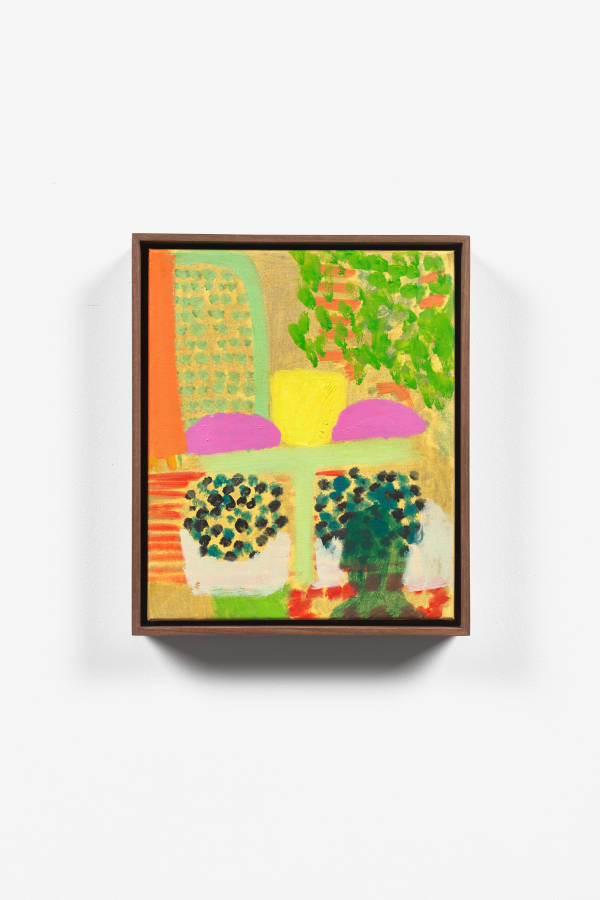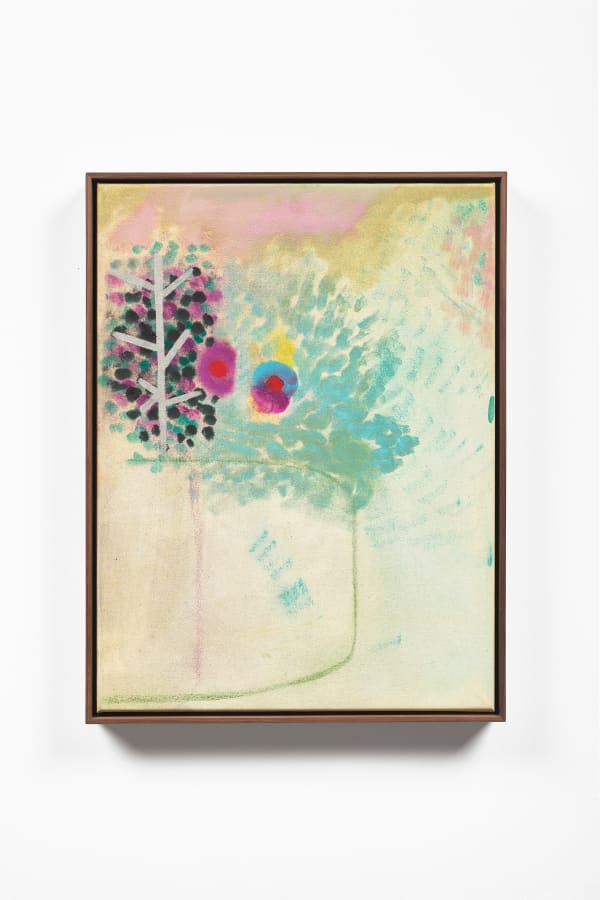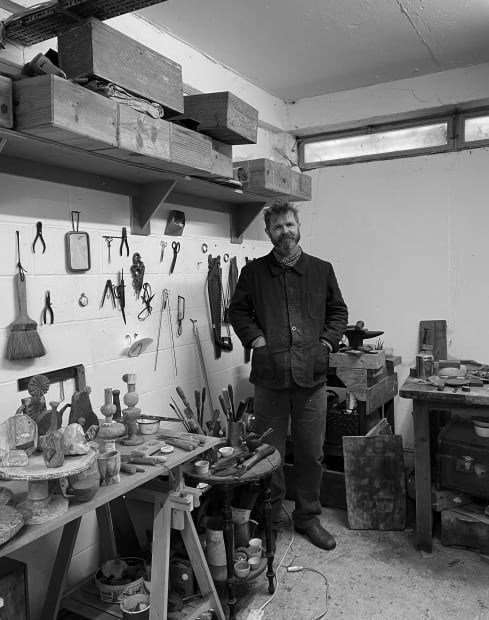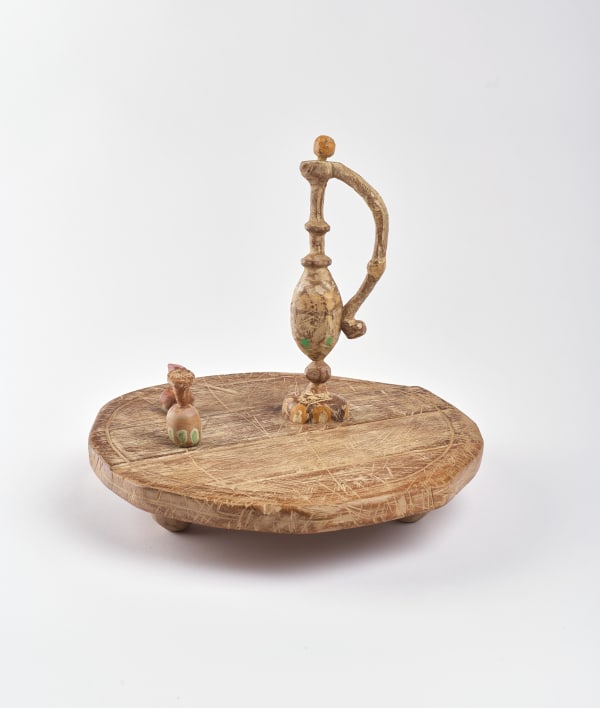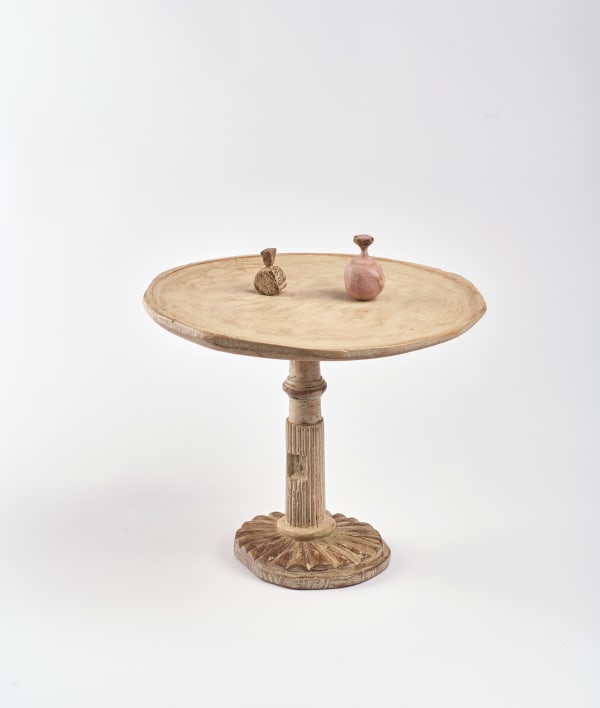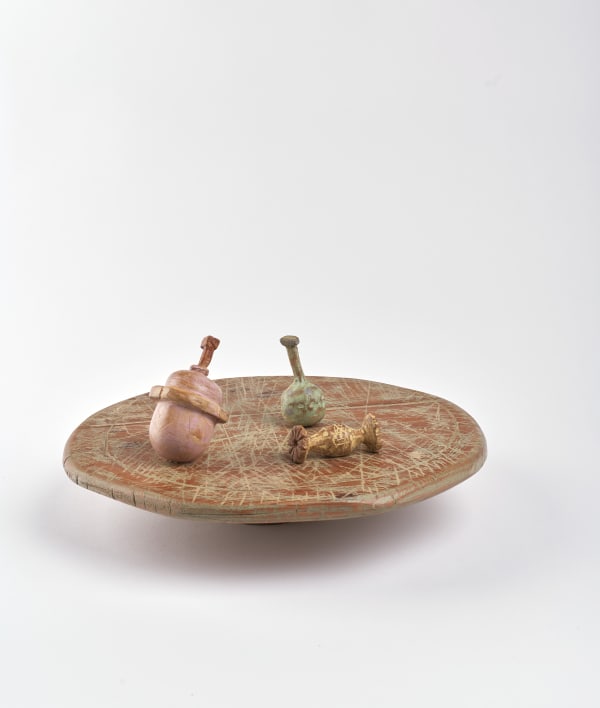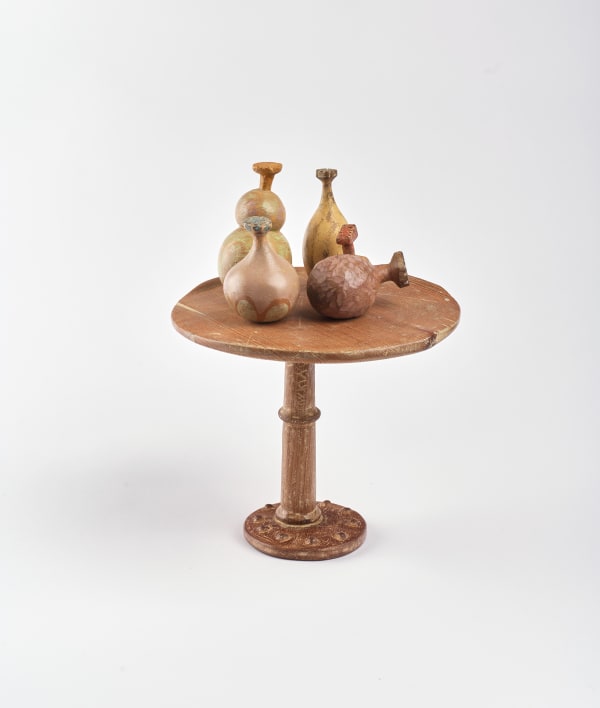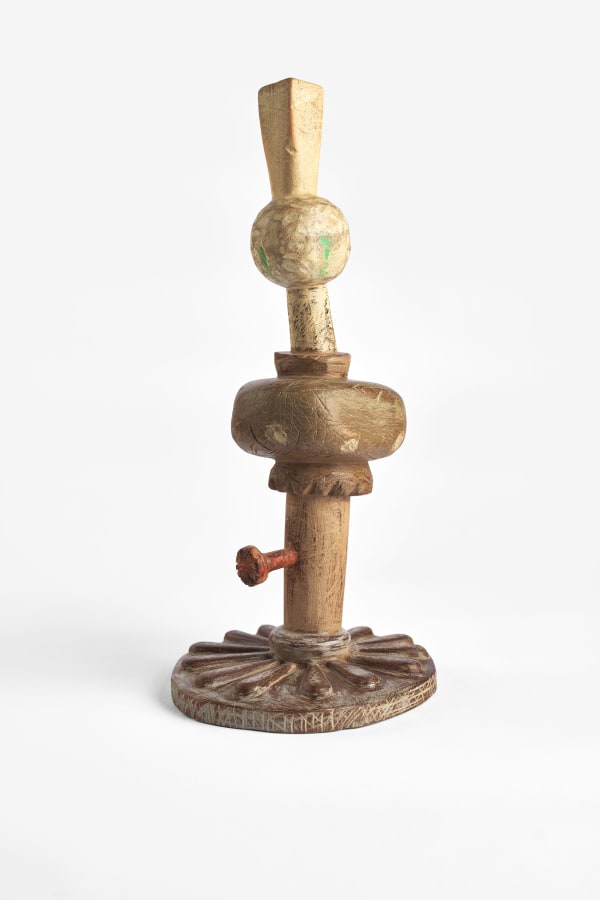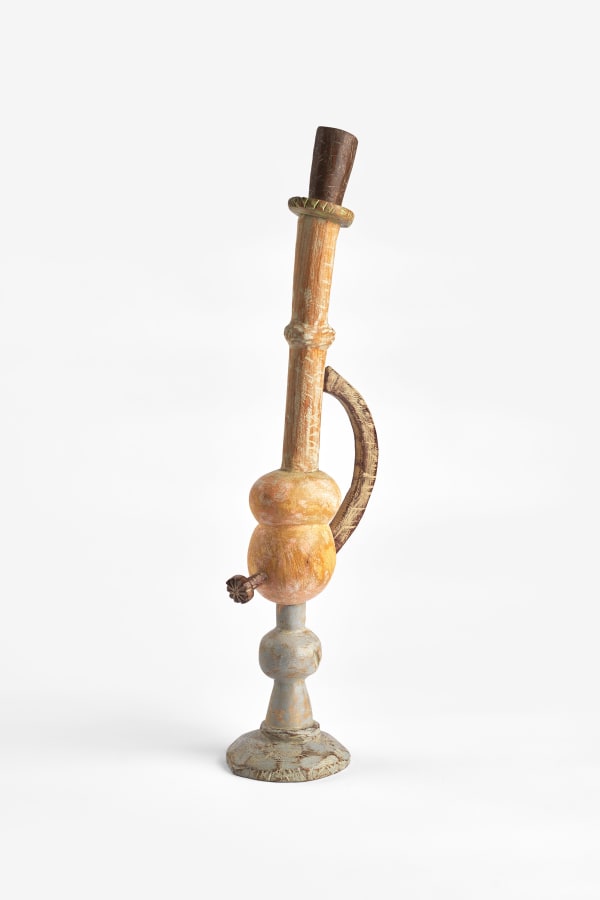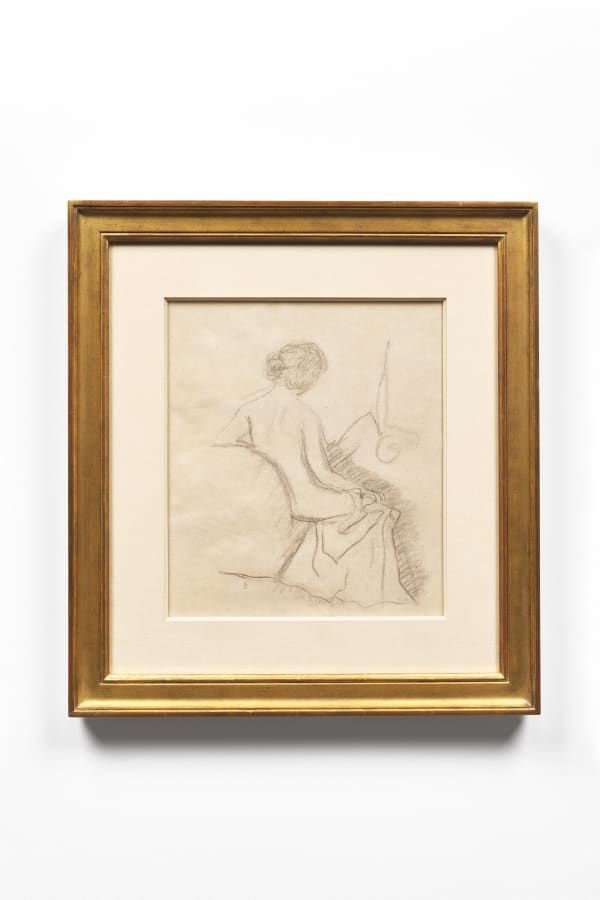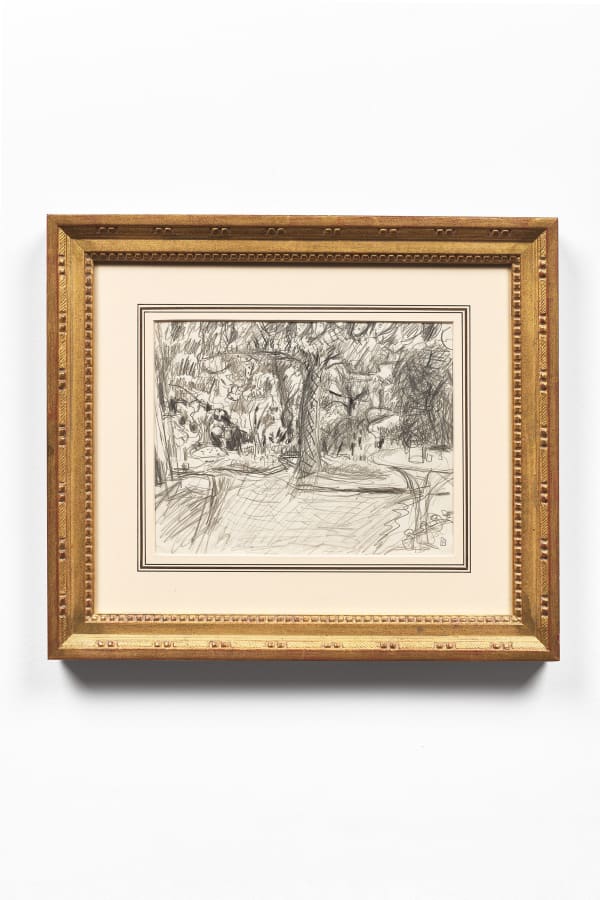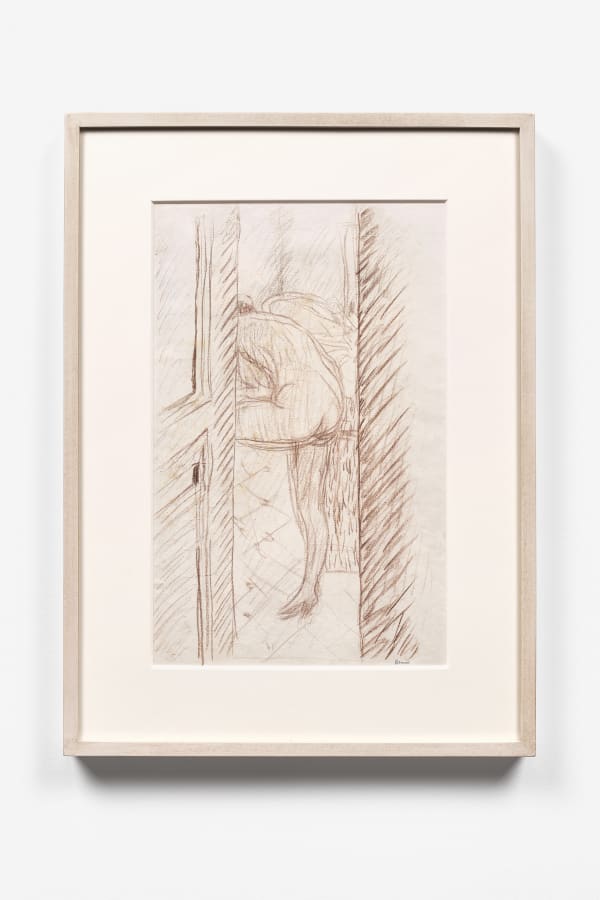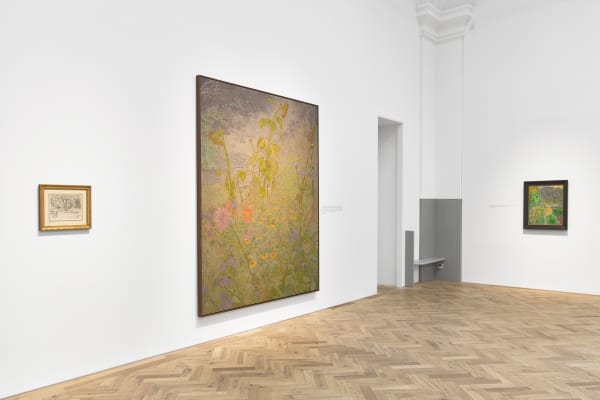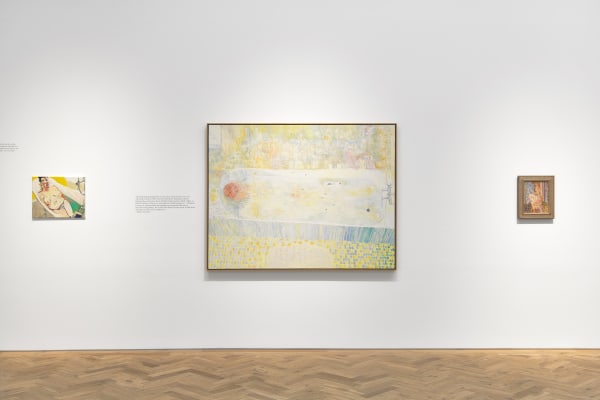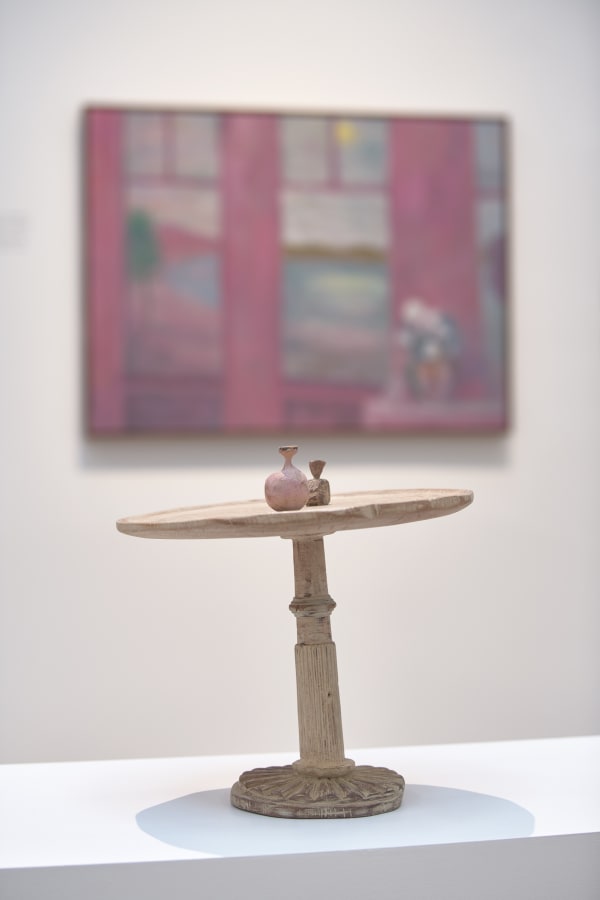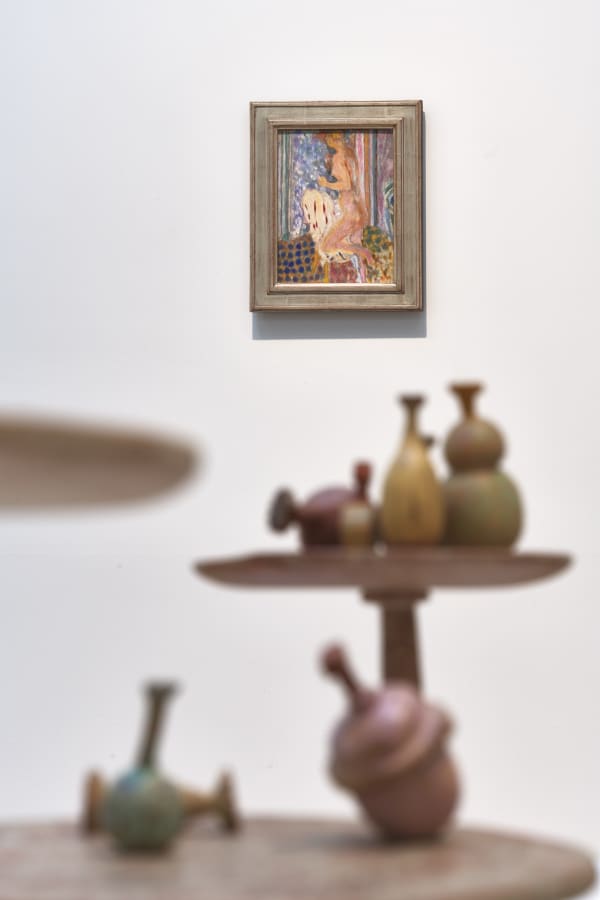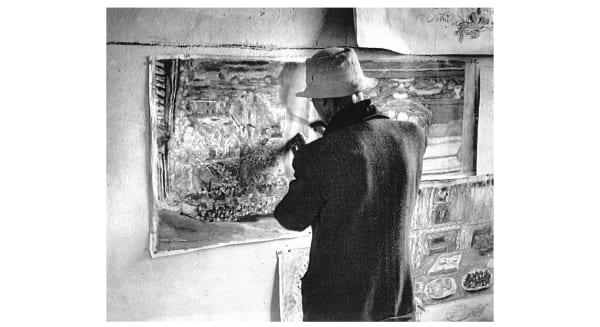-
Pierre Bonnard, Hayley Barker, Andrew Cranston, Michael Clarence, Helena Foster, Nick Goss, Chantal Joffe, Aubrey Levinthal,
Sophia Loeb, Shota Nakamura, Lorna Robertson and Phoebe Unwin
with sculpture by Joel Tomlin.
-
 Pierre BonnardStudy for “Nude with a Chair”, c. 1935gouache over pencil indications on paper mounted on canvas
Pierre BonnardStudy for “Nude with a Chair”, c. 1935gouache over pencil indications on paper mounted on canvas
31.4 x 24 cm (canvas)
12 3/8 x 9 1/2 in -
All of the invited artists have thought about Bonnard in different ways, perhaps using his work a little, or at least thinking about it in relation to their own, though what they do with those thoughts is very different. Many of the painters in this exhibition make works that exist in the hinterland between experience and memory: the gap between how we remember things and how they are.
-

Pierre Bonnard in his studio, Villa Le Bosquet, Le Cannet, 1941. Photograph: André Ostier.
-
 Portrait of Hayley Barker. Photograph: Max Knight.
Portrait of Hayley Barker. Photograph: Max Knight. -
 Hayley BarkerTessa's Garden, 2024oil on linen258 x 212 cm (framed)
Hayley BarkerTessa's Garden, 2024oil on linen258 x 212 cm (framed)
101 5/8 x 83 1/2 in -
 Andrew Cranston in his studio. Photograph: Richard Gaston.
Andrew Cranston in his studio. Photograph: Richard Gaston. -
 Andrew CranstonFairly Liquid, 2025oil on canvas143.3 x 183.4 cm (framed)
Andrew CranstonFairly Liquid, 2025oil on canvas143.3 x 183.4 cm (framed)
56 3/8 x 72 1/4 in -
 Portrait of Michael Clarence.
Portrait of Michael Clarence. -
 Michael ClarenceTwo High Hearts, 2023oil, acrylic, chalk, and binder on calico133.3 x 113.3 cm (framed)
Michael ClarenceTwo High Hearts, 2023oil, acrylic, chalk, and binder on calico133.3 x 113.3 cm (framed)
52 1/2 x 44 5/8 in -
 Portrait of Helena Foster. Photograph: Anna Francesca Jennings.
Portrait of Helena Foster. Photograph: Anna Francesca Jennings. -
 Helena FosterJoyful, 2024oil on linen48.1 x 42.9 cm (framed)
Helena FosterJoyful, 2024oil on linen48.1 x 42.9 cm (framed)
19 x 16 7/8 in -
 Portrait of Nick Goss. Photograph: John Harries.
Portrait of Nick Goss. Photograph: John Harries. -
 Nick GossHotel Paradiso, 2024distemper, oil, and silkscreen on linen183.2 x 163.4 cm (framed)
Nick GossHotel Paradiso, 2024distemper, oil, and silkscreen on linen183.2 x 163.4 cm (framed)
72 1/8 x 64 3/8 in -
 Portrait of Chantal Joffe. Photograph: Joshua Monaghan.
Portrait of Chantal Joffe. Photograph: Joshua Monaghan. -
 Chantal JoffeReading in the Bath (Hotel Stella D’Italia), 2025oil on canvas40 x 50 cm (canvas)
Chantal JoffeReading in the Bath (Hotel Stella D’Italia), 2025oil on canvas40 x 50 cm (canvas)
15 3/4 x 19 3/4 in -
 Portrait of Aubrey Levinthal. Photograph: Courtney Apple.
Portrait of Aubrey Levinthal. Photograph: Courtney Apple. -
 Portrait of Sophia Loeb.
Portrait of Sophia Loeb. -
 Sophia LoebA sua face me encanta (Your face enchants me), 2024acrylic, oil, and pigment on canvas73 x 102.9 cm (framed)
Sophia LoebA sua face me encanta (Your face enchants me), 2024acrylic, oil, and pigment on canvas73 x 102.9 cm (framed)
28 3/4 x 40 1/2 in -
 Portrait of Shota Nakamura. Photograph: Jordan Weitzman.
Portrait of Shota Nakamura. Photograph: Jordan Weitzman. -
 Shota NakamuraMelchsee, 2024oil on linen92 x 123.5 cm (framed)
Shota NakamuraMelchsee, 2024oil on linen92 x 123.5 cm (framed)
36 1/4 x 48 5/8 in -
 Shota Nakamurauntitled (le bonheur), 2024oil on linen32 x 37 cm (frame)
Shota Nakamurauntitled (le bonheur), 2024oil on linen32 x 37 cm (frame)
12 5/8 x 14 5/8 in -
 Portrait of Lorna Robertson. Photograph: Richard Gaston.
Portrait of Lorna Robertson. Photograph: Richard Gaston. -
 Lorna RobertsonHalf-remembered names and faces, 2025oil on canvas112.9 x 143 cm (framed)
Lorna RobertsonHalf-remembered names and faces, 2025oil on canvas112.9 x 143 cm (framed)
44 1/2 x 56 1/4 in -
 Portrait of Phoebe Unwin. Photograph: Phoebe Unwin Studio.
Portrait of Phoebe Unwin. Photograph: Phoebe Unwin Studio. -
 Phoebe UnwinA Bath Six Times Over, 2025acrylic on canvas186.6 x 156.9 cm (frame)
Phoebe UnwinA Bath Six Times Over, 2025acrylic on canvas186.6 x 156.9 cm (frame)
73 1/2 x 61 3/4 in -
 Portrait of Joel Tomlin.
Portrait of Joel Tomlin. -
-
 Joel TomlinSilvan, 2024wood, tempera and beeswax31 x 34 x 35 cm
Joel TomlinSilvan, 2024wood, tempera and beeswax31 x 34 x 35 cm
12 1/4 x 13 3/8 x 13 3/4 in -
 Joel TomlinHaerfest, 2024found wood, tempera, and beeswax29 x 30 x 30 cm
Joel TomlinHaerfest, 2024found wood, tempera, and beeswax29 x 30 x 30 cm
11 3/8 x 11 3/4 x 11 3/4 in -
 Joel TomlinEndgame, 2024wood, tempera and beeswax16 x 35 x 35 cm
Joel TomlinEndgame, 2024wood, tempera and beeswax16 x 35 x 35 cm
6 1/4 x 13 3/4 x 13 3/4 in -
 Joel TomlinHerbst Feuer, 2024wood, tempera, and beeswax29 x 21 x 22 cm
Joel TomlinHerbst Feuer, 2024wood, tempera, and beeswax29 x 21 x 22 cm
11 3/8 x 8 1/4 x 8 5/8 in
-
-
-
 Joel TomlinBeacon, 2024found wood, tempera, and beeswax36 x 17 x 17 cm
Joel TomlinBeacon, 2024found wood, tempera, and beeswax36 x 17 x 17 cm
14 1/8 x 6 3/4 x 6 3/4 in -
 Joel TomlinHarlequins, 2024found wood, tempera, and beeswax16 x 8 cm (left)
Joel TomlinHarlequins, 2024found wood, tempera, and beeswax16 x 8 cm (left)
6 1/4 x 3 1/8 in
19 x 9 cm (right)
7 1/2 x 3 1/2 in -
 Joel TomlinJem, 2024found wood, tempera, and beeswax51 x 15 cm
Joel TomlinJem, 2024found wood, tempera, and beeswax51 x 15 cm
20 1/8 x 5 7/8 in
-
-
 Pierre BonnardGarden at Le Cannet, c. 1943oil on canvas66.5 x 55.5 cm (canvas)
Pierre BonnardGarden at Le Cannet, c. 1943oil on canvas66.5 x 55.5 cm (canvas)
26 1/8 x 21 7/8 in -
-
 Pierre BonnardSeated Nude Seen from the Back, c. 1905charcoal and black chalk on paper34.9 x 31.1 cm (paper)
Pierre BonnardSeated Nude Seen from the Back, c. 1905charcoal and black chalk on paper34.9 x 31.1 cm (paper)
13 3/4 x 12 1/4 in -
 Pierre BonnardStudy for “Midi au Jardin”, c. 1946pencil on paper
Pierre BonnardStudy for “Midi au Jardin”, c. 1946pencil on paper
21 x 26.7 cm (paper)
8 1/4 x 10 1/2 in -
 Pierre BonnardNude in a Bathroom, c. 1930reddish brown pencil on buff paper48.9 x 31.4 cm (paper)
Pierre BonnardNude in a Bathroom, c. 1930reddish brown pencil on buff paper48.9 x 31.4 cm (paper)
19 1/4 x 12 3/8 in
-
-
We would like to thank all of the artists, and our colleagues at Wildenstein & Co, Victoria Miro, Pippy Houldsworth Gallery, CLEARING and Amanda Wilkinson Galleryfor their generosity and co-operation in the making of this exhibition.We would also like to thank Barry Schwabsky, whose 2023 essay ‘In Bonnard’s Room’ was an early prompt for the conversations with artists that led to this exhibition.
Ingleby | Wings of a Butterfly
Past viewing_room


